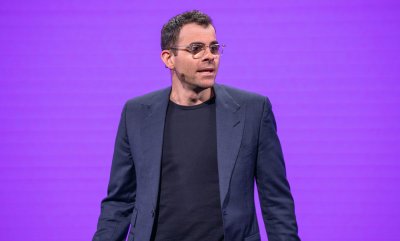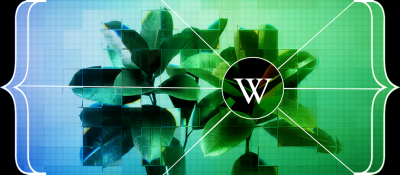Microsoft Paint Gets a Pro Upgrade: Photoshop-Style Project Files Arrive
@devadigax17 Sep 2025

Microsoft's humble Paint application, a staple of Windows since its inception, is undergoing a significant transformation, shedding its rudimentary image editor skin for a more professional appearance and functionality. The company has announced the addition of Photoshop-like project files, a game-changer for users who have long sought more advanced features within the familiar, accessible interface. This marks another substantial step in Microsoft's ongoing effort to modernize and enhance its built-in applications for Windows 11.
The addition of project files mirrors the functionality found in professional image editing software like Adobe Photoshop. Instead of saving individual layers separately, users will now be able to save the entire project, complete with all layers, adjustments, and effects, as a single, easily manageable file. This significantly streamlines the workflow, particularly for complex projects involving multiple layers and edits. Previously, users had to painstakingly save each layer individually, making collaborative work and resuming projects cumbersome.
This new capability builds on several other significant improvements Microsoft has implemented in Paint over the past few years. The addition of features like dark mode, transparency support, and the integration of layers fundamentally shifted Paint from a simple drawing tool to a more capable image editor. The inclusion of AI-powered image creation tools further expanded Paint's capabilities, enabling users to generate images from text prompts, blurring the lines between simple image editing and more advanced generative AI applications.
The strategic enhancement of Paint aligns with Microsoft's broader strategy of integrating AI capabilities across its product ecosystem. By adding AI-powered features and professional tools to its built-in applications, Microsoft is not only improving the user experience but also increasing the competitiveness of its operating system. This approach, contrasting with the standalone, subscription-based models of some competitors, provides users with powerful tools directly integrated into their operating system, a powerful differentiator in a competitive market.
The implications of this upgrade extend beyond simple convenience. The introduction of project files allows for more complex image manipulation and opens up new avenues for creativity. Users can now experiment with different layer combinations and effects without worrying about losing their progress. This flexibility enables a more iterative design process, fostering experimentation and allowing for greater refinement in artwork.
Furthermore, the ability to seamlessly save and share project files with colleagues and collaborators significantly improves teamwork. No longer will users need to navigate complex file management systems or worry about compatibility issues. This simplified workflow promotes a smoother collaborative experience, making Paint a more viable option for team projects.
The timing of this update is significant, as Microsoft continues to position Windows 11 as a powerful and versatile operating system suited to both casual and professional users. By continuously improving its core applications, Microsoft is demonstrating its commitment to delivering a comprehensive and competitive user experience. The enhancement of Paint, a long-standing symbol of simplicity and accessibility, is a powerful testament to Microsoft's willingness to adapt and evolve with the changing needs of its user base.
While specific release dates haven't been confirmed, the announcement suggests that these Photoshop-like features are on the horizon and will likely be rolled out via a Windows 11 update in the near future. Users can anticipate further news and details regarding the exact release timeline from Microsoft in the coming weeks or months. This seemingly small but significant upgrade demonstrates Microsoft's ongoing commitment to enhancing its default applications, making Windows 11 a more powerful and versatile operating system for a wide range of users.
The integration of these professional-grade features into a previously basic application signals a broader trend in the software industry: the blurring of lines between consumer-grade and professional-grade tools. This trend is fueled by the increasing accessibility of powerful AI technologies and the growing demand for user-friendly interfaces that cater to diverse skill levels. Microsoft's decision to significantly upgrade Paint positions it favorably in this evolving landscape, offering users a powerful, free, and readily available alternative to expensive subscription-based software.
The addition of project files mirrors the functionality found in professional image editing software like Adobe Photoshop. Instead of saving individual layers separately, users will now be able to save the entire project, complete with all layers, adjustments, and effects, as a single, easily manageable file. This significantly streamlines the workflow, particularly for complex projects involving multiple layers and edits. Previously, users had to painstakingly save each layer individually, making collaborative work and resuming projects cumbersome.
This new capability builds on several other significant improvements Microsoft has implemented in Paint over the past few years. The addition of features like dark mode, transparency support, and the integration of layers fundamentally shifted Paint from a simple drawing tool to a more capable image editor. The inclusion of AI-powered image creation tools further expanded Paint's capabilities, enabling users to generate images from text prompts, blurring the lines between simple image editing and more advanced generative AI applications.
The strategic enhancement of Paint aligns with Microsoft's broader strategy of integrating AI capabilities across its product ecosystem. By adding AI-powered features and professional tools to its built-in applications, Microsoft is not only improving the user experience but also increasing the competitiveness of its operating system. This approach, contrasting with the standalone, subscription-based models of some competitors, provides users with powerful tools directly integrated into their operating system, a powerful differentiator in a competitive market.
The implications of this upgrade extend beyond simple convenience. The introduction of project files allows for more complex image manipulation and opens up new avenues for creativity. Users can now experiment with different layer combinations and effects without worrying about losing their progress. This flexibility enables a more iterative design process, fostering experimentation and allowing for greater refinement in artwork.
Furthermore, the ability to seamlessly save and share project files with colleagues and collaborators significantly improves teamwork. No longer will users need to navigate complex file management systems or worry about compatibility issues. This simplified workflow promotes a smoother collaborative experience, making Paint a more viable option for team projects.
The timing of this update is significant, as Microsoft continues to position Windows 11 as a powerful and versatile operating system suited to both casual and professional users. By continuously improving its core applications, Microsoft is demonstrating its commitment to delivering a comprehensive and competitive user experience. The enhancement of Paint, a long-standing symbol of simplicity and accessibility, is a powerful testament to Microsoft's willingness to adapt and evolve with the changing needs of its user base.
While specific release dates haven't been confirmed, the announcement suggests that these Photoshop-like features are on the horizon and will likely be rolled out via a Windows 11 update in the near future. Users can anticipate further news and details regarding the exact release timeline from Microsoft in the coming weeks or months. This seemingly small but significant upgrade demonstrates Microsoft's ongoing commitment to enhancing its default applications, making Windows 11 a more powerful and versatile operating system for a wide range of users.
The integration of these professional-grade features into a previously basic application signals a broader trend in the software industry: the blurring of lines between consumer-grade and professional-grade tools. This trend is fueled by the increasing accessibility of powerful AI technologies and the growing demand for user-friendly interfaces that cater to diverse skill levels. Microsoft's decision to significantly upgrade Paint positions it favorably in this evolving landscape, offering users a powerful, free, and readily available alternative to expensive subscription-based software.
Comments
Related News

Beyond the Mic: Instagram Denies Eavesdropping, But AI's Predictive Power Redefines Digital Privacy
@devadigax | 01 Oct 2025
@devadigax | 01 Oct 2025

Microsoft 365 Premium Redefines AI Productivity, Bundling Copilot to Rival ChatGPT Plus Pricing
@devadigax | 01 Oct 2025
@devadigax | 01 Oct 2025

Wikimedia's Grand Vision: Unlocking Its Vast Data Universe for Smarter Discovery by Humans and AI
@devadigax | 30 Sep 2025
@devadigax | 30 Sep 2025

Google Drive Fortifies Defenses with New AI-Powered Ransomware Detection
@devadigax | 29 Sep 2025
@devadigax | 29 Sep 2025

The DeepSeek Phenomenon: Unpacking the Viral AI Chatbot from a Leading Chinese Lab
@devadigax | 29 Sep 2025
@devadigax | 29 Sep 2025
 AI Tool Buzz
AI Tool Buzz